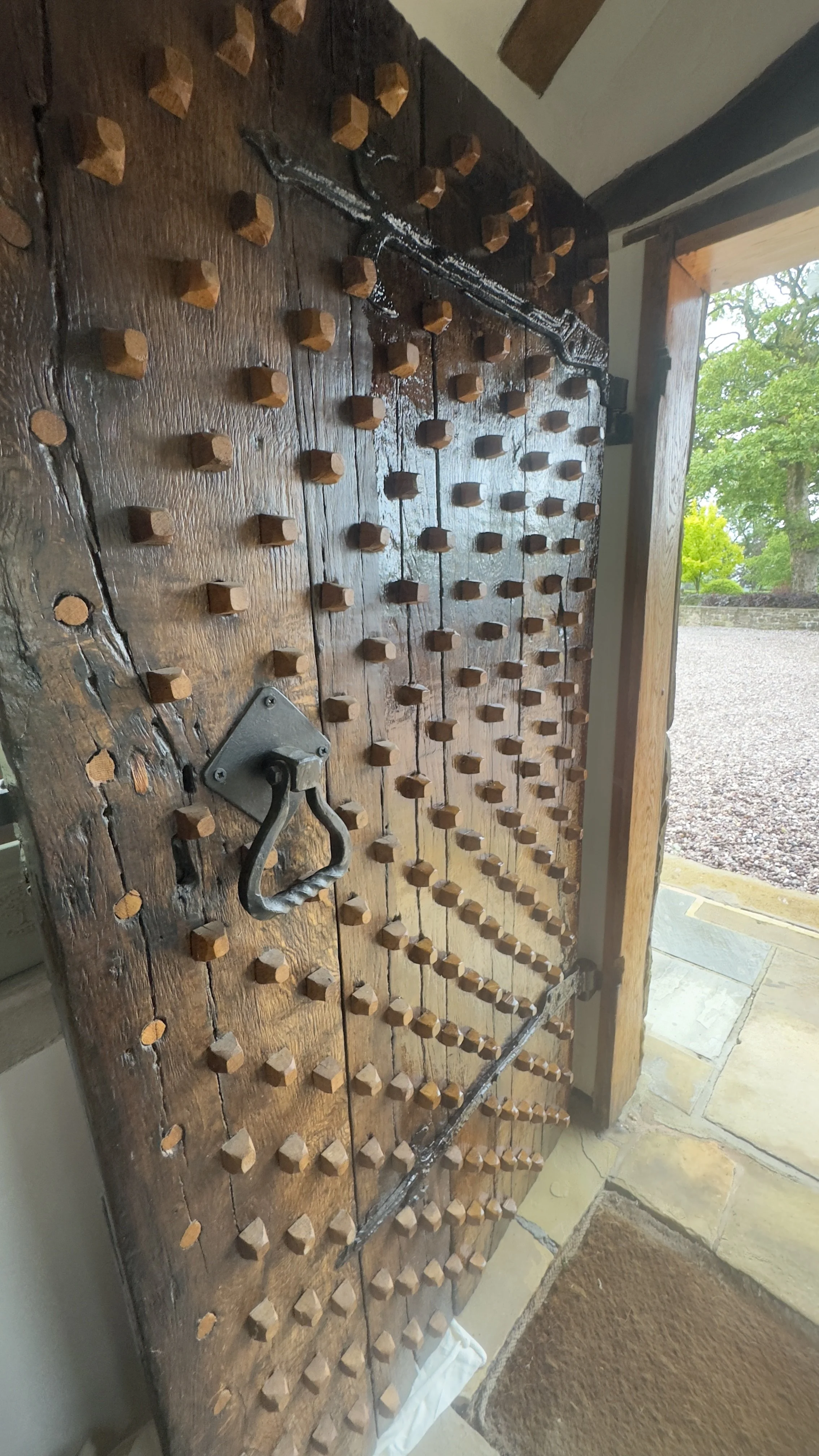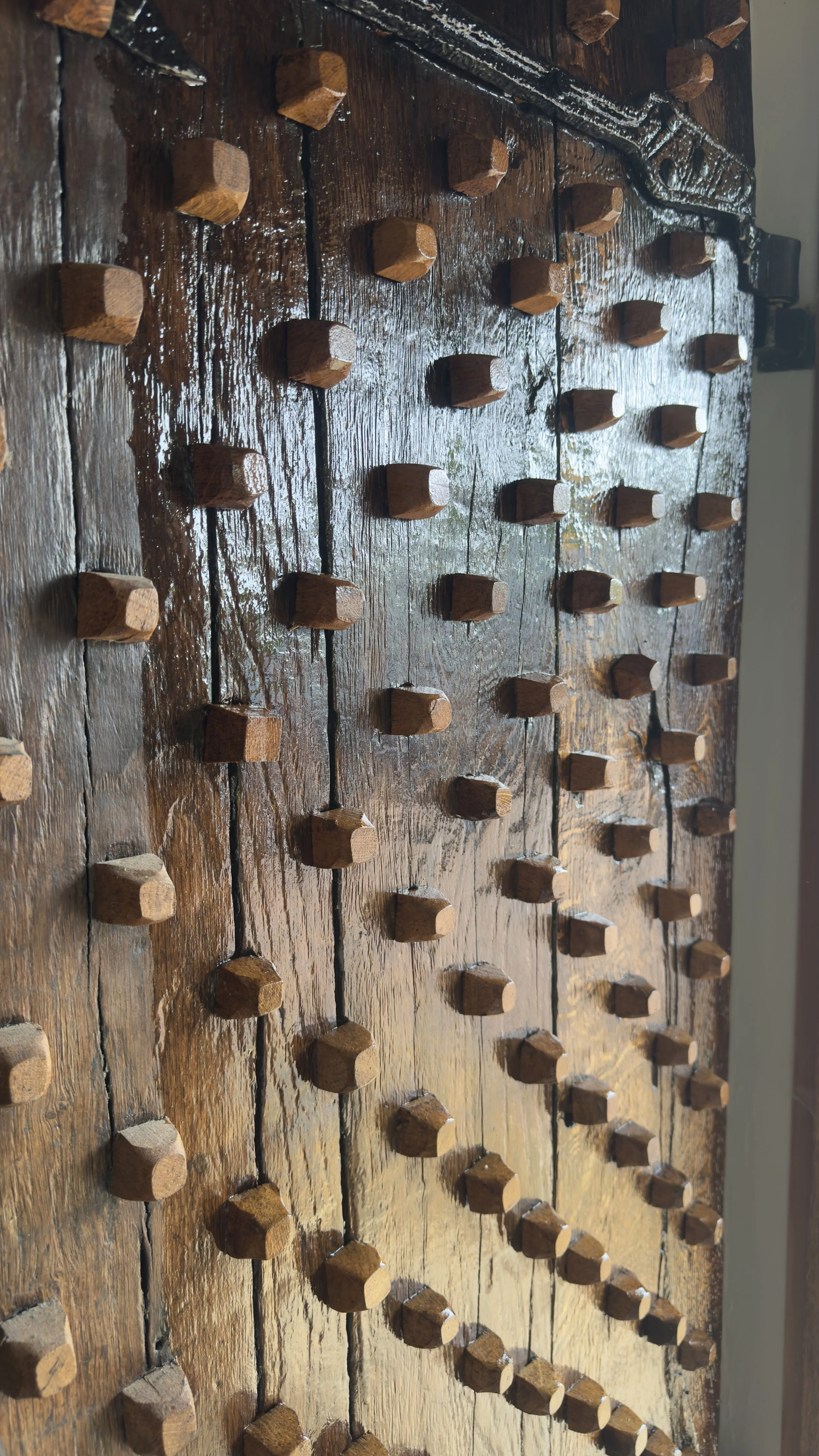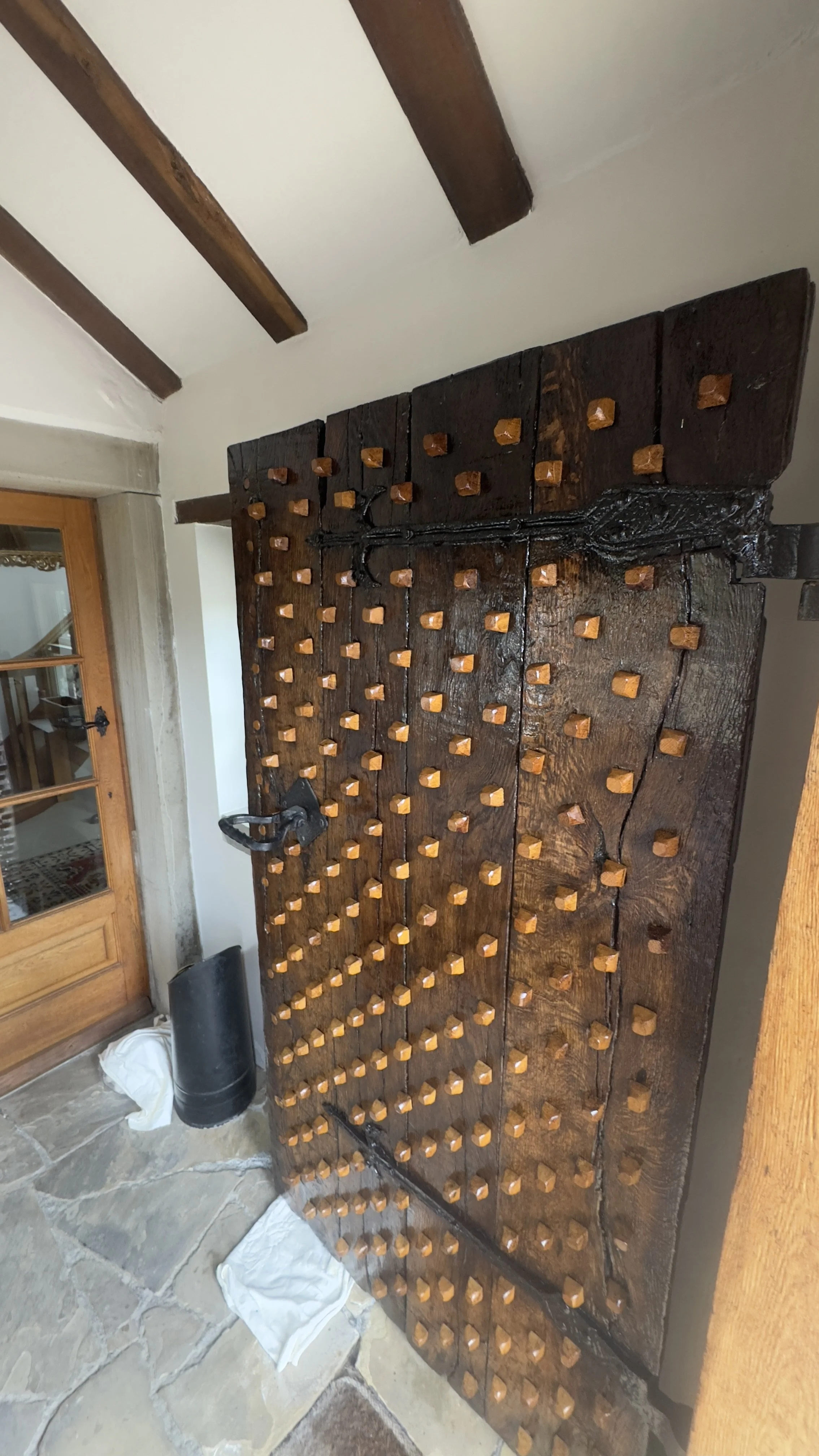Traditional restoration
Restoring a 13th-century hardwood door requires a delicate and respectful approach to preserve its historical integrity. I began by carefully assessing the wood for any signs of damage, rot, or insect infestation. I then gently cleaned the surface using a mild wood cleaner and soft brushes to remove dirt and grime without stripping the original patina.
Next, I addressed any structural weaknesses, luckily I didn’t need to use appropriately aged or reclaimed hardwood to repair or replace damaged sections, ensuring the new wood matches the original in species, grain, and texture. I always avoid power tools that can cause damage; instead, using hand tools to maintain the door's authenticity.
For any metal fittings or hinges, I consider conservation rather than replacement. Cleaning metalwork carefully to remove rust using gentle methods, and apply protective coatings that do not alter their appearance.
I used a traditional mix of tung and linseed oil rather than more modern finishes to achieve a natural, durable, and breathable surface. This combination penetrates deep into the wood, providing excellent protection while enhancing the grain without the plastic-like appearance often associated with synthetic coatings. The blend cures slowly, allowing for a hard, water-resistant finish that maintains the wood’s integrity over time. It’s a time-tested method that respects the material’s natural characteristics and offers a subtle, warm patina that ages beautifully. I wanted to avoid over-restoring; the goal is to retain as much original material and evidence of history as possible.
I also documented the entire process for records, and consulted with conservation specialists if necessary to ensure the restoration respects the door’s cultural and architectural significance.





